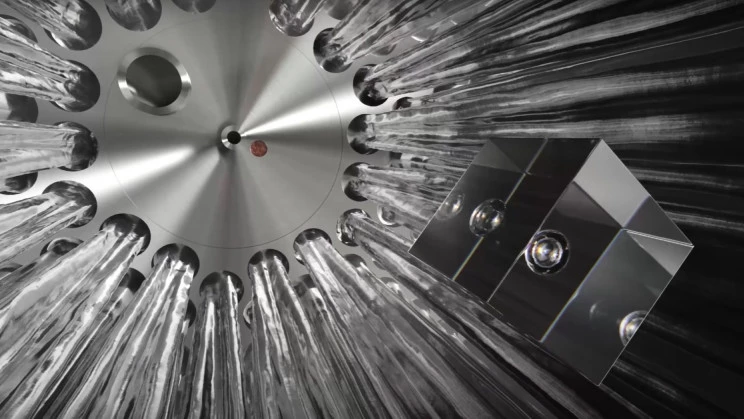
Could there be a new, improved method for delivering nuclear fusion? A British fusion company seems to think so as their novel pistol shrimp-inspired system has succeeded with aplomb. According to a company spokesperson, they aim to have a pilot plant operational by the 2030s. This could have a tremendously positive impact on the UK, especially with the current energy crisis.
A New Way Forward For Nuclear Fusion
A British fusion firm, together with a University of Oxford spinoff, First Light Fusion claims it achieved nuclear fusion without using lasers and powerful magnets. This new method offers the “fastest, simplest and cheapest route to commercial fusion power,” as stated in a recent press release. Interestingly, one of the smallest creatures in the ocean, the pistol shrimp, inspired this novel projectile-type approach.
What Is Nuclear Fusion?
Nuclear fusion is the process by which heat is produced when two lightweight atoms are combined to create a heavier atom. These reactions also power the Sun and other stars at temperatures of more than 15 million degrees Celsius.
With a lot of focus on global warming and cleaner energy, governments around the world are investing more and more in nuclear fusion. These sorts of ventures have the potential to drastically help reduce carbon emissions by providing practically limitless clean energy.
Most big tokamak projects use fusion reactors called tokamaks that rely on lasers and immensely powerful magnets to contain exceptionally hot plasma reactions. , One such example is the one developed by MIT startup Commonwealth Fusion Systems, backed up by Bill Gates.
An Alternative Approach To Developing Nuclear Fusion
Using a railgun, First Light Fusion has presented an alternative approach to creating nuclear fusion. They would fire a projectile toward a fuel pellet-carrying falling target at hypersonic speed which allows it to generate timed collapsing shockwaves. The pressures generated by these bursts of energy would be quite incredible albeit with a brief existence.
These pressure levels are nearly a billion times greater than sea-level air pressure. They are so high that the process could be used to make small embedded deuterium fuel pellets implode. The speeds are high enough to overcome nuclear repulsion which kickstarts fusion reactions.
Related: Building Nuclear Power Plants In The UK
Taking Inspiration From Nature: The Pistol Shrimp
The technique First Light employed came from the pistol shrimp since they fire bubbles at unsuspecting prey. They snap their claws together at incredibly high speeds that ultimately create a shockwave and even a bright flash of light.
Based on this, the company designed a method to create the conditions required for fusion. Using a railgun-type electromagnetic device, they fire a projectile at speeds of over 14,500 mph. When it hits the falling target, the impact pressure is approximately 100 gigapascals. The design of the fuel pellet-carrying target is something else as it amplifies this pressure immensely to around one terapascal.
How Does It Work?
When the fuel pellet implodes, it reaches a massive pressure of 100 terapascals. According to First Light, this makes the fuel the fastest moving object on Earth reaching speeds of 157,000 mph. During this process, the fuel pellet is compressed from a few millimetres to less than 100 microns, enough for fusion reactions to occur.
The novel system transfers that energy through a pool of liquid lithium and a heat exchanger transfer. According to First Light, a commercial plant using the impressive design would have an output of around 744 MW, slightly less than the 1 GW output from a typical nuclear power plant. The biggest benefit is that there is no risk of a nuclear meltdown.
Conclusion
First Light says it has achieved fusion using its design and it is “working towards a pilot plant producing ~150 MW of electricity and costing less than $1 billion in the 2030s.”
While the promise of nuclear fusion is getting closer and closer, there are still several challenges that companies could face. However, thanks to companies like First Light, investors and innovators from across the world, nuclear fusion is becoming more than a pipedream.
For more interesting articles on some of the latest news in engineering, manufacturing and technology, please follow our blog. You can also find us on social media using the hashtag #PRVtech. Find out more about our range of services on the website and our dedicated YouTube channel.


 Mail:
Mail: 




[…] and manufacturing? Follow our blog for some of the latest in innovations, including solar panels, nuclear fusion and […]